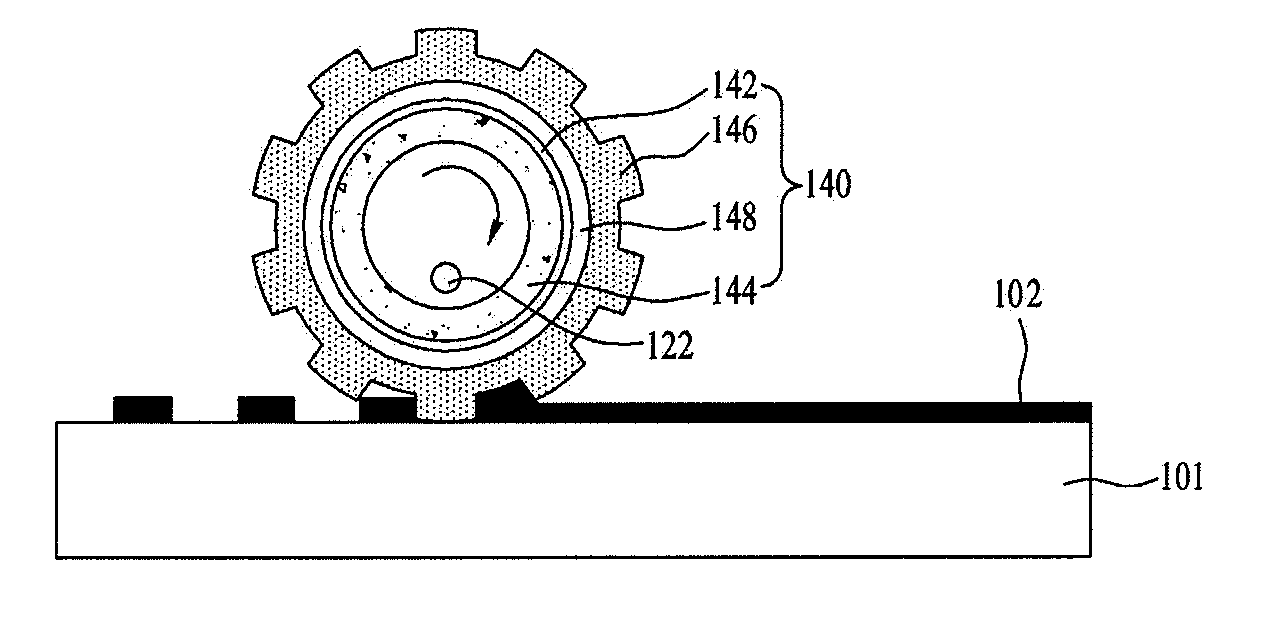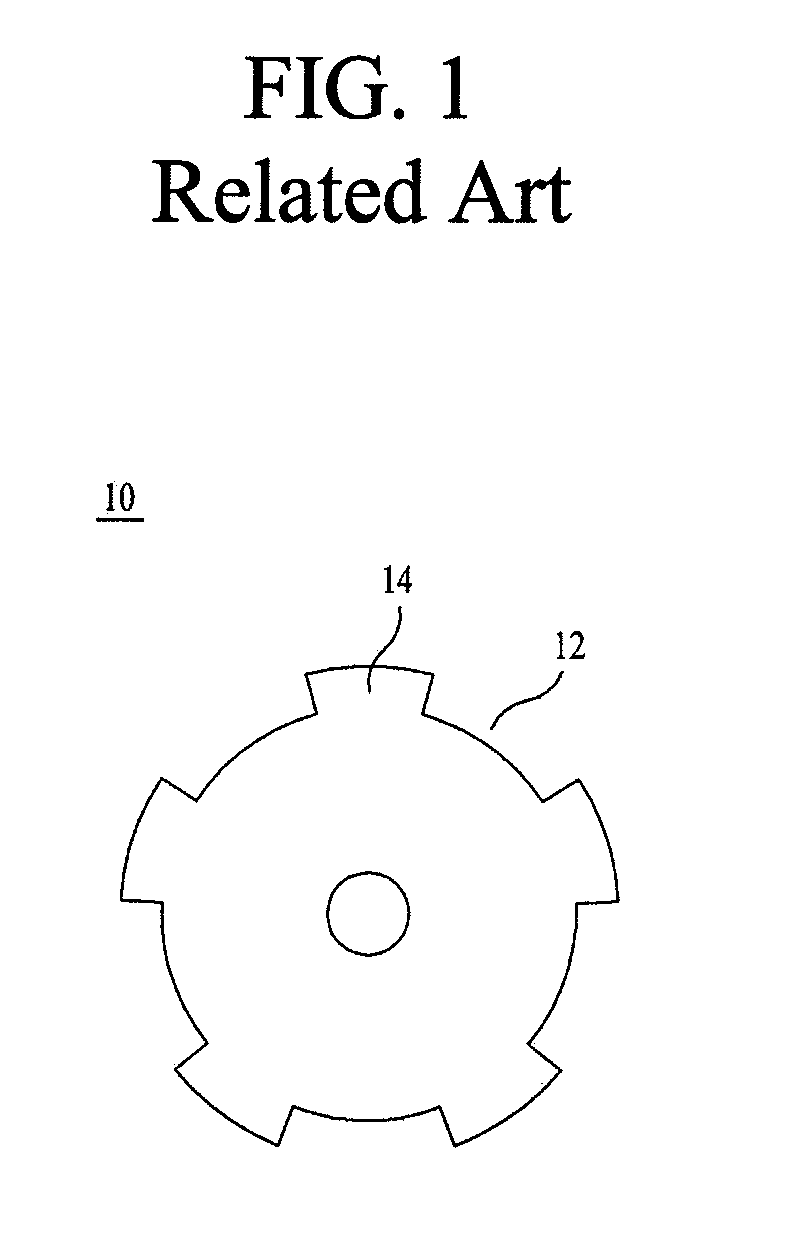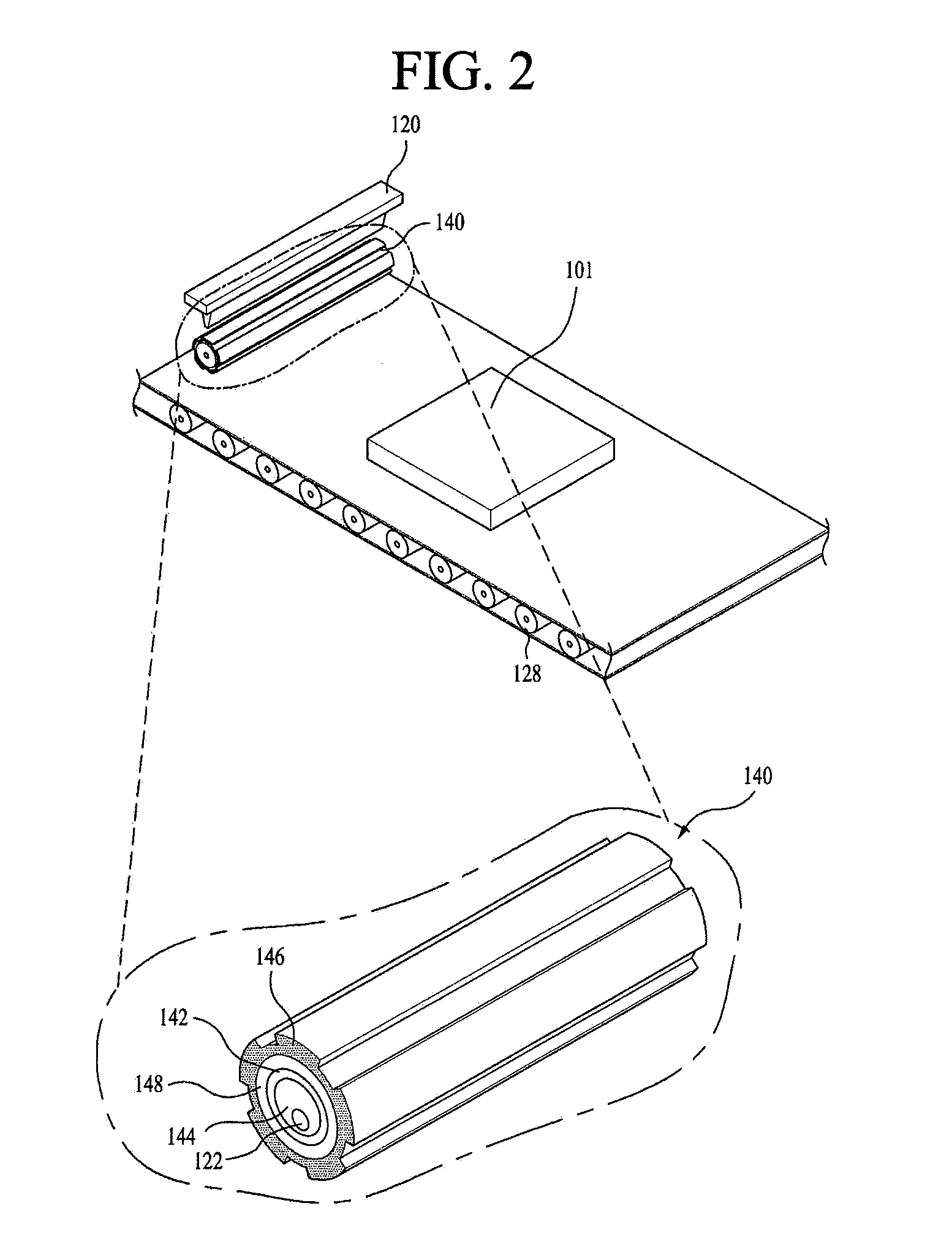Roll mold, method for fabricating the same and method for fabricating thin film pattern using the same
a technology of rolling molds and rolls, applied in the direction of dough shaping, manufacturing tools, applications, etc., can solve the problems of increasing fabrication costs, complicated masking process, and complicating the overall manufacturing process, so as to prevent dimensional variation of rolling molds and simplify the overall manufacturing process.
- Summary
- Abstract
- Description
- Claims
- Application Information
AI Technical Summary
Benefits of technology
Problems solved by technology
Method used
Image
Examples
first embodiment
[0043]FIGS. 3A to 3E are sectional views illustrating a method for fabricating the roll mold illustrated in FIG. 2 according to a
[0044]As shown in FIG. 3A, a master pattern layer 112 having a groove pattern 112a and a protrusion pattern 112b is formed on a master substrate 110 having a flat surface. The master pattern layer 112 is formed by applying an organic material, which can be stripped, such as photoresist, and patterning the material through photolithography, holographic lithography, laser processing, electron beam processing, focused ion beam processing or the like. Meanwhile, the master pattern layer 112 and the master substrate 110 are separately formed, or a master pattern whose surface has a groove pattern and a protrusion pattern may be formed by patterning the master substrate 110.
[0045]The master pattern layer 112 may be surface-treated with a self-assembled monolayer (SAM) to facilitate release (detachment) of the master pattern layer 112 from the mold surface layer ...
second embodiment
[0058]FIGS. 6A to 6C are views illustrating a method for patterning a thin film via a printing method employing the roll mold of the present invention according to a
[0059]As shown in FIG. 6A, a roll mold 140 including a base roller 144, an adhesive resin layer 142, a buffer layer 148 and a master pattern layer 146 is provided. The printing liquid 102 supplied from the printing liquid supplier 120 fills the groove of the roll mold 140.
[0060]Next, as shown in FIG. 6B, the roll mold 140 filled with the printing liquid 102 is rolled over the substrate 101. Accordingly, the printing liquid 102 is cured through a curing apparatus, such as a UV lamp, provided in the base roller 144 of the roll mold 140, or a curing apparatus provided on the rear surface of the substrate 101. Accordingly, the printing liquid 102 is transcribed, dried and cured on the substrate 101 and is thus formed into a thin film pattern, as shown in FIG. 6C.
third embodiment
[0061]FIGS. 7A to 7D are views illustrating a method for patterning a thin film via a printing method employing the roll mold of the present invention according to a
[0062]As shown in FIG. 7A, a roll mold 140 including a base roller 144, an adhesive resin layer 142, a buffer layer 148 and a master pattern layer 146 is provided. The printing liquid 102 supplied by the printing liquid supplier 120 fills the groove of the roll mold 140.
[0063]Next, as shown in FIG. 7B, the printing liquid 102 is transcribed to a transcription roller 106, which rotates, and, at the same time, is engaged in the roll mold 140. The transcription roller 106 provided with the printing liquid 102 is rolled over the substrate 101, as shown in FIG. 7C. Accordingly, the printing liquid 102 is transcribed, dried and cured on the substrate 101 and is thus formed into a thin film pattern, as shown in FIG. 7D.
[0064]As such, the thin film pattern 104 shown in FIGS. 5C, 6C and 7D may be used to form thin or thick films ...
PUM
| Property | Measurement | Unit |
|---|---|---|
| hydrophobic | aaaaa | aaaaa |
| flexible | aaaaa | aaaaa |
| size | aaaaa | aaaaa |
Abstract
Description
Claims
Application Information
 Login to View More
Login to View More - R&D
- Intellectual Property
- Life Sciences
- Materials
- Tech Scout
- Unparalleled Data Quality
- Higher Quality Content
- 60% Fewer Hallucinations
Browse by: Latest US Patents, China's latest patents, Technical Efficacy Thesaurus, Application Domain, Technology Topic, Popular Technical Reports.
© 2025 PatSnap. All rights reserved.Legal|Privacy policy|Modern Slavery Act Transparency Statement|Sitemap|About US| Contact US: help@patsnap.com



